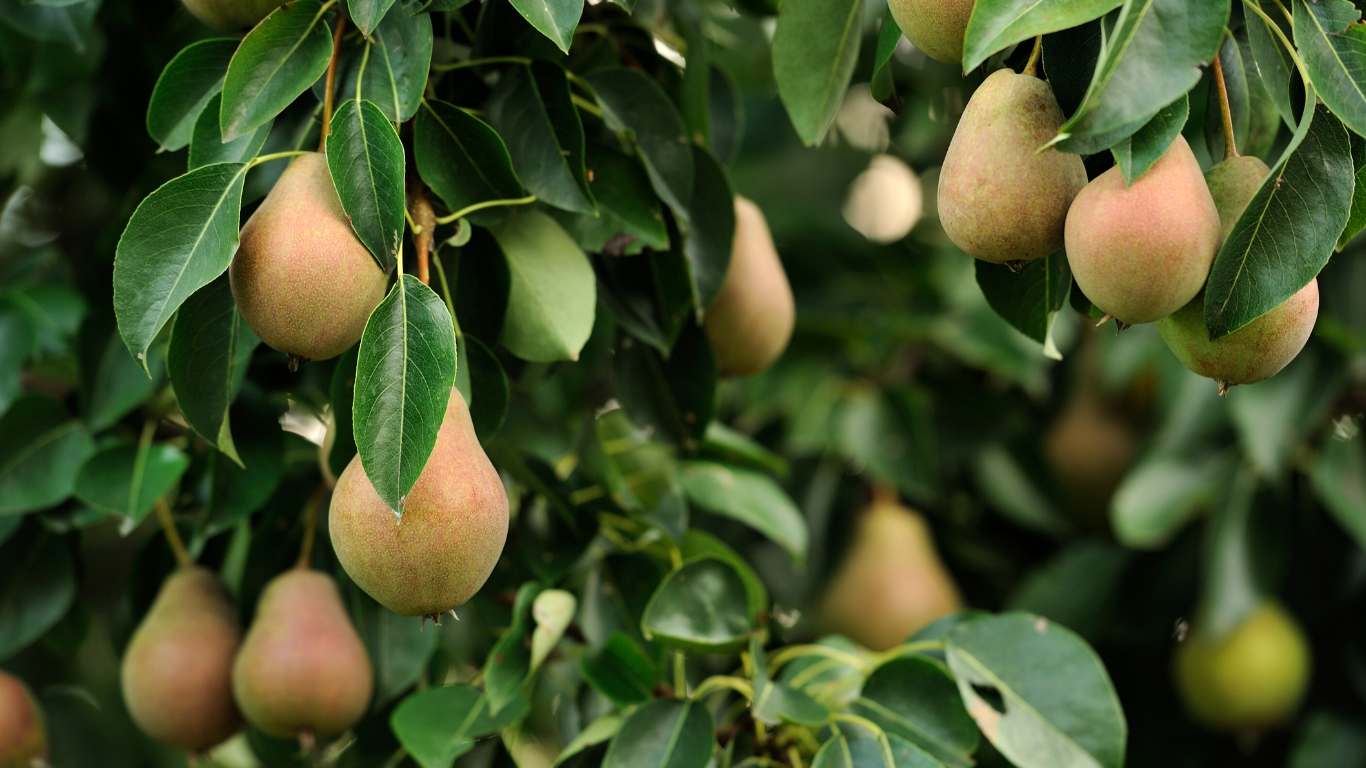Love Local Ontario Produce | How to Select, Prepare, and Enjoy Ontario Pears this Season
How to Select, Prepare, and Enjoy Ontario Pears this Season

Local produce is abundant in Ontario during the summer, and with pears coming into season at the end of the summer months, they can sometimes get overlooked. But pears are a powerhouse from a nutrition standpoint, and have a wide array of culinary uses.
In Ontario look for Barlett pears at the end of August until October. Bosc pears from September to December. And Cold Snap pears are picked in September and October, kept in cold storage for a few months, and then made available for purchase into the winter months.
Pear Nutrition
Similar to most fruit, pears are a great source of vitamins and minerals. But what really sets them apart is their high fibre content. A medium sized pear has roughly 5-6g of fibre, which is 20% of the recommended daily fibre intake for women and 13% for men.
Pears are a source of soluble fibre (pectin specifically), which is the type of fibre that may help with constipation, lower cholesterol and manage blood sugars. Like more fruits and vegetables, a lot of the fibre is found in the skin, so don’t skip it!
How to Find the Best Ontario Pears
Ontario pears are available starting at the end of summer, and running until December or February, depending on the variety. Pears are unique in that they do not ripen on the tree. They will continue to ripen once picked, so when you’re shopping for pears, it’s okay to choose ones that are still firm. They will soften when stored at home. Additionally, a little bruising or scarring on the surface is fine. It won’t impact their flavour.
Pears are best stored in a paper bag at room temperature, away from direct sunlight. Once they are ripened to your liking, transfer to the fridge where they should stay fresh for up to 5 days.
How to Prepare and Enjoy Ontario Pears
Pears can be enjoyed in a variety of ways – raw, poached, baked, juiced, or grilled. Try them raw as a snack, in a salad, or on a charcuterie board paired with blue cheese, walnuts and chocolate. Get creative and use a juicer or blender to make homemade pear juice.
Pears can be cooked in a number of ways. You can poach them (cook them gently in a liquid) in red wine and serve them with ice cream, use in upside-down cakes, or slice them and enjoy on yogurt. Try grilling, or roasting them for caramelization and added flavour. From here they would pair really well with savoury dishes such as pork chops, or prosciutto, or add them into a soup . Lastly, enjoy them baked into loaves, cakes, muffins, or make a pear crumble.
Here are some recipes to try:
If you’re cooking with pears, ideally choose a variety that is firmer, and will hold its shape once it’s cooked. Bosc is a great variety to cook or bake with.
When enjoying pears raw as a snack, or in a salad, keep the skin on for the benefit of the fibre. However, the skin gets tough when it’s cooked, so remove the skin if you’re baking, or cooking with them.
And did you know that pears and apples can be used interchangeably in recipes? So if you don’t have apples, use pears! Or try a blend of apples and pears.
Pears are the perfect fruit to enjoy in the early fall and into the winter. Packed with fibre and micronutrients, and with a wide range of ways to be enjoyed, there’s not much this fruit can’t do. Look for ‘Ontario grown’ labels at the grocery store and farmers markets to ensure you’re supporting local farmers and locally grown, fresh pears.
